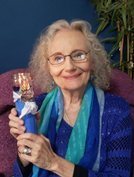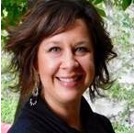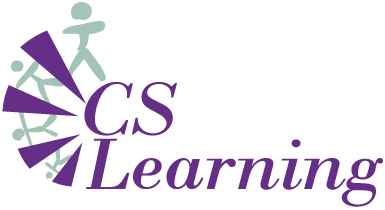July 2021
Pathways to Resilience: Healing in Community with One Another
Connection can be the first step to resilience. Janet Childs’ life’s work has been about helping people in trauma feel less alone in their suffering, find safe spaces and safe ways to express what they’re feeling, and begin to find a new way forward. We spoke with Janet about how crisis intervention services and tools can make a difference in the lives of people suffering from grief and loss.
Melissa Santos, Community Solutions: After 45 years of service, you retired in February from your role at the Bill Wilson Center as Director of Educational Services. But, having known you for many years as a partner and friend to Community Solutions, I know your commitment to this work is never done! As the creator of the Bay Area Critical Incident Stress Management team, I’d love to hear more about your continued work with the team on delivering crisis intervention services to those in need.
JC: We formed the Critical Incident Management team about 40 years ago to work with both responders and the community to build resiliency in the aftermath of a critical incident. In May, we had a mass shooting here in San Jose where our team is located, and we are still responding to both the community and to responders that were involved in that incident.
While we can’t stop critical incidents from happening, what we can do is to create a safe place and a safe way to acknowledge and express, and to know that your reactions are natural and normal, and that quiets a lot of the anxiety around how we’re responding to stress. And we give people a chance to be in community so that they’re not dealing with it alone.
MS: What kind of event can be a critical incident?
JC: When we say critical incident, we mean any incident that causes unusually strong reactions in the people involved or in the people responding. It can be any incident that touches our heart or stays with us in a critical way. And while some are very universal, such as a mass shooting death of a coworker or a friend, or the death or injury of a child, there are also individual critical incidents that we can go through depending on what’s in our “backpack.”
MS: Our backpack?
JC: Our stress backpack. It’s all of the things that we have gone through in our past, the trauma that can be easily activated by what’s happening to us in present time. What may seem like a small incident from the outside may be a huge incident for you if it taps into that backpack. So the real way to identify a critical incident is to ask, “Is it impacting you? Are you thinking about it? Are you feeling about it? Is it affecting your life, your work, your daily activities? Are you experiencing secondary trauma through media coverage that’s creating even more stress?”
MS: When we’re experiencing mass trauma like the pandemic and mass shootings and hate crimes in our community, they’re universal, and yet they’re individualized in so many ways for the people that are really experiencing them. How do we heal from these incidents?
JC: We can’t heal unless we first acknowledge and express our trauma. Years ago, our first letterhead at The Centre for Living with Dying program had a quote by James Baldwin that we used with his permission: “Not everything that is faced can be changed, but nothing can be changed until it is faced.”
And, it may be an event that happened yesterday or it may be an event that happened 10 years ago. The racial inequity and social injustice and online hate we’ve all been exposed to lately can be triggering for people of color, both on our teams and in the community. We call it 360 grief because every area of your life is impacted. You can’t go out the door without thinking, am I going to be profiled? Am I going to be attacked?
When we acknowledge and express it, and we do that together, we actually create a safety net for each other. It gets it from the inside to the outside, so we’re not carrying it by ourselves. That expression doesn’t have to be verbal—it can be in writing, it can be doing art, it can be whatever works for you. But the key is to do it in community, because that creates a safety container within which we can deal with it.
Our team has a tradition started by a firefighter who brought a candle to our meeting many years ago. To this day, we continue to light a candle to remind each other that we are the light for everybody that is watching, that you are the light for your community, and we need your unique light. We need your unique support, your unique energy to help build safety.
MS: Following COVID-19, many of us are experiencing re-entry anxiety based on real survival fear around our health and safety at a time when our community may not feel safe—there has been so much division in our country. And we can’t quite remember how to do things the way we did before.
JC: Absolutely. We often say that we were in the first wave, we’re now in the second wave, and we’re moving toward the third wave. We’re not going back to the first wave. That’s incredibly traumatizing, and meanwhile we’ve become used to sheltering in place. And now our children are going back to school and our entire daily life is changing again and we’re not sure we want to go back to the workplace. It’s incredibly scary. Let’s acknowledge and express and explore those fears. “What are you most scared of about coming to work? What are you dealing with at home? Our kidlets are going back to school and what happens?. When we try to shove it down, it just gets worse. It just gets heavier in the backpack. So what’s an action step we can do for ourselves, and in the community, to create healing?”
We need to have teams within every caregiving organization and in every business organization, because whether you’ve been having a work critical incident or a personal critical incident, your best support can be your coworkers—your work family.
MS: So, what’s next in building your legacy?
JC: As I am settling into retirement, I continue my work with the Bay Area CISM team responding to critical incidents in the community. It’s been gratifying to work alongside CS over the past several years to build your staff’s capacity and resilience as you provide urgent services to the community. From our work together responding to the Gilroy Garlic Festival shooting to our recent joint response to the VTA shooting in San Jose, you are a dedicated and highly skilled organization. I’m grateful that this work will continue with Community Solutions’ new CISM team, beginning in August and all that will come from your leadership in providing urgent care in Santa Clara County.
MS: One last question. How do you define resiliency?
JC: Resiliency for me equals peace. It’s the ability to accept and compassionately process whatever is going on for me or for my community at any given time. To be able to honor it, acknowledge it, and express it, and then take an action step to go from out of control to in control. Then to reconnect with what still is good in my life. If I can reconnect with that goodness, I can find the meaning in surviving the critical incident.
Resiliency is truly about being at peace with whatever is going on with me, being in loving acceptance of myself and others, and bearing witness to each other. One of our paramedics went to Uganda with Doctors without Borders, and they have a saying there that describes critical incident stress management perfectly: “I stand beside you. In essence, I can’t do anything to fix it or make it un-happen, but I can stand beside you while you gain the strength to make your own meaning out of what’s happened, and to create that toolbox of resiliency of things that work for you.
When we can be and hold ourselves compassionately, and stand beside our coworkers, loved ones, friends, and community, we can move through whatever comes our way with grace, with togetherness, and with love.
___________________________________________________________________________________
If you or someone you know is struggling with grief, loss or trauma, please reach out to the Bill Wilson Center at 408-243-0222 and ask for an intake counselor.
The Centre for Living With Dying provides emotional support to adults and children facing life-threatening illness or the trauma of having a loved one die. The Centre also provides crisis intervention services and broad-based educational programs on grief and loss. Individual and small group grief support is available for adults, children, teens and families. The Healing Heart Program is a special grief program for youth ages 5-17, as well as parent/caregiver groups to assist adults supporting children through the grieving process. Other services include Centre for Living with Dying Support Groups (Registration Required), Bay Area Critical Incident Stress Management Team and Certified Community Education (law enforcement, nurse, clergy and mental health training and support groups for survivors of suicide, homicide, breast cancer, among others).
 After 45 years of service, Janet Childs retired in February 2021 as Director of Educational Services for the Centre for Living with Dying and creator of the Bay Area Critical Incident Stress Management (CISM) program at the Bill Wilson Center. Janet has been working in the field since 1976 and has been active in crisis intervention counseling for the past 32 years. She has also been an active trainer providing services in the areas of death, dying, grief and loss, trauma management, CISM, rape and suicide prevention. In retirement, Janet continues her work with the Bay Area CISM team and conducting training.
After 45 years of service, Janet Childs retired in February 2021 as Director of Educational Services for the Centre for Living with Dying and creator of the Bay Area Critical Incident Stress Management (CISM) program at the Bill Wilson Center. Janet has been working in the field since 1976 and has been active in crisis intervention counseling for the past 32 years. She has also been an active trainer providing services in the areas of death, dying, grief and loss, trauma management, CISM, rape and suicide prevention. In retirement, Janet continues her work with the Bay Area CISM team and conducting training.
 Melissa Santos is passionate about breaking the stigmas that surround mental health, addiction and domestic violence. She seeks opportunities to bridge the gaps between communities and cultures and build empathy, understanding and resilience through the common experiences and trauma that bind us. Melissa is Senior Director of Professional Development and Organizational Initiatives at Community Solutions in Santa Clara County, CA overseeing internal clinical training, leadership development, community-based training and strategic initiatives. She also provides consultation services to small nonprofits and foundations in strategic planning and organizational development.
Melissa Santos is passionate about breaking the stigmas that surround mental health, addiction and domestic violence. She seeks opportunities to bridge the gaps between communities and cultures and build empathy, understanding and resilience through the common experiences and trauma that bind us. Melissa is Senior Director of Professional Development and Organizational Initiatives at Community Solutions in Santa Clara County, CA overseeing internal clinical training, leadership development, community-based training and strategic initiatives. She also provides consultation services to small nonprofits and foundations in strategic planning and organizational development.
She has over 20 years of experience in the behavioral health field and is a national trainer and CA Lead of the Celebrating Families! evidence-based curriculum for families impacted by addiction. Melissa has been a member of the Santa Clara County Touchpoints training team for over 10 years and facilitates training, conference workshops and webinars on trauma-informed care, mindfulness, recovery and organizational leadership throughout the country.



